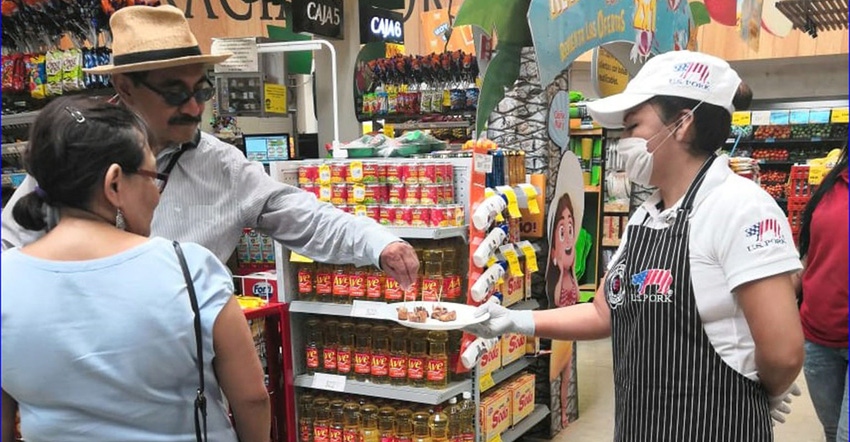September 9, 2019

Convenience stores are offering a wide selection of entrée and full meal options that are winning over customers and creating more demand for U.S. red meat. For every gourmet hot dog sold in a South Korean GS25 store, every bowl of beef noodle soup ladled from a 7-Eleven hot food counter in Taiwan and every pork sausage sandwich pulled from a shelf in a Mexican Oxxo outlet comes another trade opportunity for the U.S. beef and pork industries.
Working to stay a step ahead of the competition for this rapidly growing sector, the U.S. Meat Export Federation uses funding from the USDA Market Access Program, the Beef Checkoff and the National Pork Board to promote U.S. beef and pork – especially processed beef and pork items, but also raw material for further processing – as the centerpiece of convenience store fare in several international markets.
“Just as important as promoting existing products, we are developing brand new ideas for packaged meals and protein snack items featuring U.S. beef and pork that fit well with consumer trends in each individual market,” said USMEF President and CEO Dan Halstrom. “As the convenience store sector has taken off in various parts of the world, suppliers realize they need products to help meet the demand for these meat snacks and packaged meals. The trend is toward high-quality meat, and that is definitely an advantage for U.S. beef and pork.”
Halstrom said USMEF staff around the world report encouraging developments in this sector, including the fact that convenience stores in many Asian markets not only offer high-quality food but allocate considerable shelf space to beef and pork items such as pre-packaged lunch boxes and beef bowls.
Solid data supports USMEF’s pursuit of a larger share of the bustling global convenience store market.
According to a 2019 report by Euromonitor, which tracks retail sales and maintains a category dedicated specifically to convenience stores, per capita spending on foodservice products at convenience stores increased 14% worldwide between 2013 and 2018 and is projected to increase another 11% by 2023. South Korea has led the way, experiencing a whopping 142% increase in per capita convenience store foodservice spending from 2013 to 2018 with another 47% increase projected by 2023.
Japan, Taiwan, the ASEAN region and Mexico are other fast-growing markets identified by Euromonitor, while a USDA report suggests China’s convenience store chains, which have historically focused on lower-priced processed foods, are beginning to expand premium and imported food offerings. This trend is likely to continue as younger Chinese consumers shift away from traditional retail outlets.
These numbers lend further perspective to the Euromonitor data: In 2018, the average American spent $44.50 on foodservice items at a convenience store, which ranks fourth globally. Japanese consumers ranked first with an average of $240.80, followed by Taiwan at $80.70 and Norway at $72. The average Korean spent only $39.70 last year – good for fifth place on the list. But projected growth puts Korean spending at $58.40 by 2023. If these projections hold true, Korea would move ahead of the U.S., which is expected to reach $54.60 by 2023.
Even in less-developed markets, spending is on an impressive trajectory. In Thailand, for example, the average consumer forked over $28.80 on convenience store foodservice items in 2018 (good for No. 6 on Euromonitor’s list), but the amount is projected to exceed $50 within the next five years.
“Obviously there is tremendous potential for U.S. beef and pork in the convenience store sector, but competition is intense, so we must focus our efforts on identifying ways to highlight the advantages of U.S. products,” said Halstrom. “The quality and consistency that U.S. beef and pork deliver in processed products are really what set us apart. USMEF staff on the ground in these markets are doing a great job of conveying this message to distributors and their clientele, and this puts more U.S. beef and pork at the center of the world’s convenience store offerings.”
Source: U.S. Meat Export Federation, which is solely responsible for the information provided and is wholly owned by the source. Informa Business Media and all its subsidiaries are not responsible for any of the content contained in this information asset.
You May Also Like




